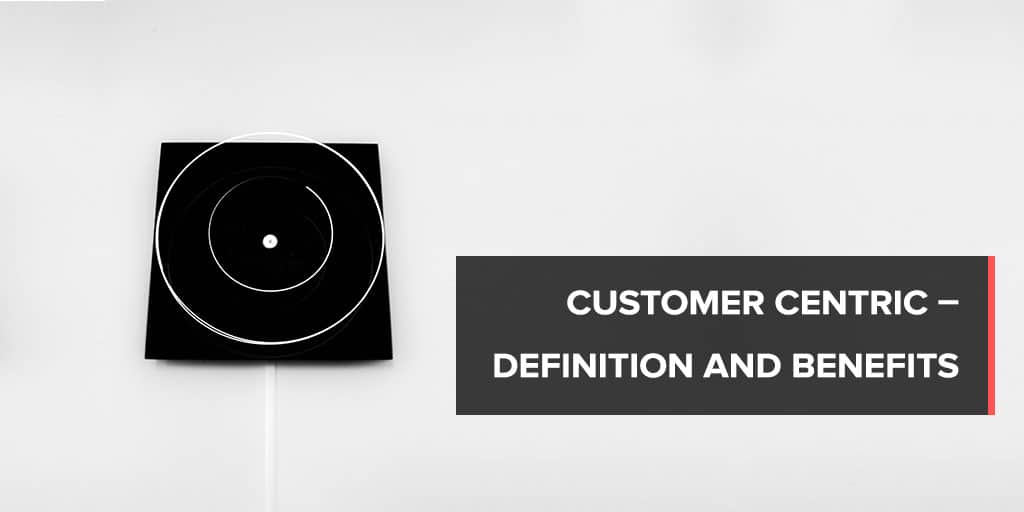Our articles often discuss customer centric actions or strategies. But what does it mean? How do you know if a company is centred around the customer? Like any aspect of organisational culture, customer centricity can be difficult to define. There isn’t a test or check-list to tell you whether or not you’re centred around your...
Our articles often discuss customer centric actions or strategies. But what does it mean? How do you know if a company is centred around the customer?
Like any aspect of organisational culture, customer centricity can be difficult to define. There isn’t a test or check-list to tell you whether or not you’re centred around your customers. So, let’s take a closer look at the concept, its benefits, and some practical rules for adopting this managerial culture.
What Does it Mean to be Customer Centric?
Being customer centric means making decisions based on the impact they will have on your customers.
An organisation centred around the customer should:
- Prioritise efforts that eliminate customer pain points.
- Consider how decisions impact the customer throughout the organisation, not only in the traditional fields (customer service and sales).
- Train all employees so that they understand how their decisions can affect customers.
- Have real leaders who are actively interested in customer problems, at a global and individual level.
These points will stand out naturally in a company with a so-called customer centred culture.

Customers are not Equally Valuable
Being customer centric also means knowing how to focus your efforts on high-value customer segments. Companies sometimes rush to meet impossible customer demands, which is a common mistake. If you make decisions with your customers in mind, then the return on investment should be positive.
There is no such thing as an “average” customer. Most of your customers end up not being very profitable. It doesn’t make sense to build your business around them. Focus on your best customers instead.
Being customer centric means:
- Using customer data to better understand and segment your customer base.
- Identifying the best customers.
- Focusing on products and services for your best customers.
- Using the Customer Lifetime Value to segment customers.

Being customer centric doesn’t mean:
- Focusing on the “average” customer.
- Seducing and retaining low quality customers.
- Under-investing in high quality customer acquisition.
- Being customer centric is the best way to boost your business. Let’s explore the benefits of transitioning towards a customer oriented culture.
What are the Benefits of Being Customer Centric?
The first benefit, that will no doubt catch your managers’ attention, is that being customer centric is profitable.
“Companies that improve their ability to consistently meet their customers’ needs will produce positive bottom-line results.” Mikel Harry and Richard Schroeder, Six Sigma.
The financial perspective is a direct benefit that kicks in as soon as your customer approach becomes more pertinent.
A business plan includes a detailed description of the company’s mission, the products and services they will offer, and how they plan on being profitable. So much so that some companies become too focused on their own inner workings. They ignore their customers’ desires and needs and become disconnected from the outside world. In which case, they will never achieve their theoretical profitability.
A customer centric strategy helps to avoid this.
Being Customer Centric Helps to Easily Recognise Opportunities for Growth
Opportunities for growth are much easier to identify when they come from your customers. When faced with dissatisfied customers, most companies try to justify themselves or to apologise. But they are missing out on a new business opportunity.
For example, an electronics company that regularly surveys its customers may find that the majority are women; and they prefer to have help installing equipment in their homes. This could lead the company to expand its business and offer home installation.
To better understand your customers’ dissatisfaction, it is important to look beyond any reasons you think you know, or assumptions.
When conducting a satisfaction survey, remember to let your customers speak, by using open questions.

Being Customer Centric Increases Customer Satisfaction in the Long Run
Customer satisfaction is always increased when a company implements a customer centric strategy.
One of the goals of customer-centricity is to know what your customers like or dislike, so you can adapt your products to better meet their needs and eliminate irritants.
High customer satisfaction makes customers more likely to return in the future. This increases their customer lifetime value.
Constantly measuring your customer satisfaction also helps to monitor your customer centric policy.

Being Customer Centric Creates a Unique Customer Experience and Relationship
When it comes to buying a product, consumers are spoiled for choice. Creating an unforgettable buying experience is more important than the product itself if you want to the customer to come back.
Smaller organisations have a little advantage here. They have less customers than larger companies and can therefore spend more time on offering personalised assistance and creating a solid relationship. Which is also why larger structures should focus on their high value customer segments, as mentioned above.
Being Customer Centric Increases your Market Share
Most markets are bursting with competitors. Maintaining or increasing your market share is key to increasing your profits.
Non-customer centric companies risk seeing their customers leave for a competitor that offers similar products with a better overall buying experience.
Resisting customer-centric changes may save money in the short term, but in the long term, your market share and profits will fall. So, make the right choice…
Companies that outperform the competition have ‘customer’ as a key skill. Teach all your employees about the benefits of customer centricity. Don’t assume that they already know.
Being customer centric brings everyone together around a shared objective: to ensure customer success and happiness. So, transform your company and reap the benefits!








